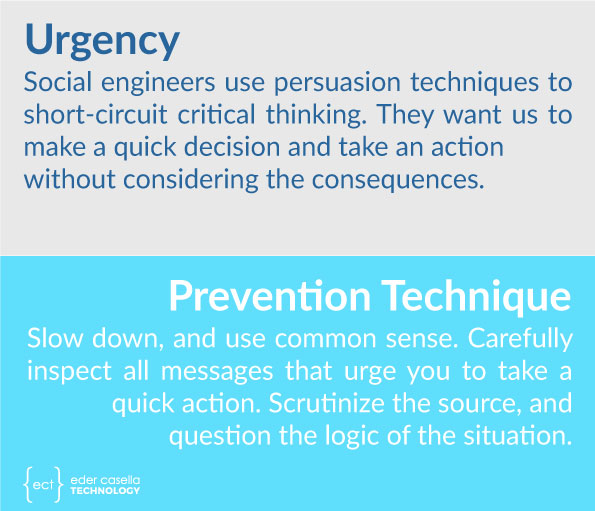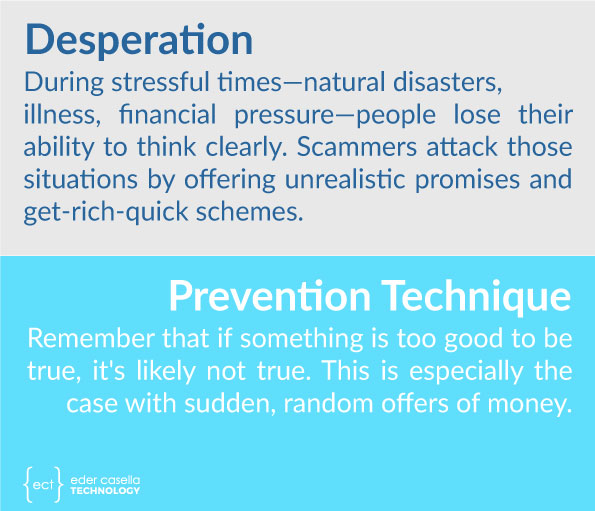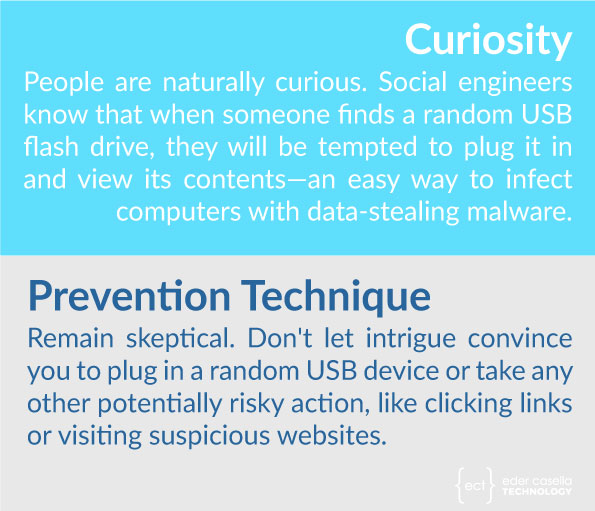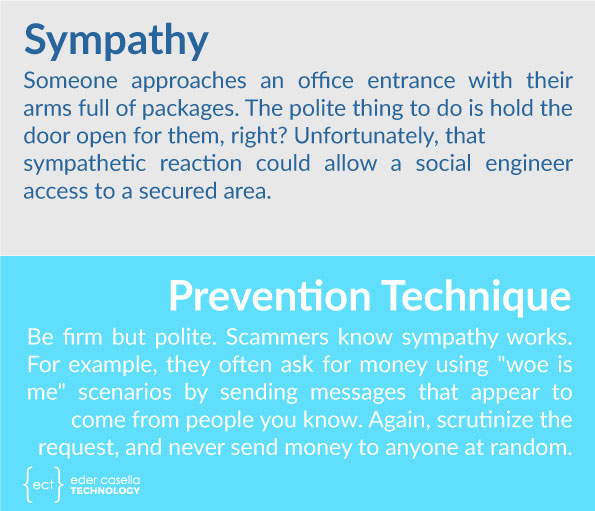Reverse Engineering Social Engineers
Reverse engineering is a great way to learn how something works by examining or disassembling it. Let’s reverse engineer common ways social engineers and scammers manipulate emotions and learn how you can avoid falling for cons.
Urgency
Social engineers use persuasion techniques to short-circuit critical thinking. They want us to make a quick decision and take an action without considering the consequences.
Prevention Technique
Slow down, and use common sense. Carefully inspect all messages that urge you to take a quick action. Scrutinize the source, and question the logic of the situation.
Fear
Scare tactics, such as claiming that you owe money or must appear in court, are a great way to convince people to click on links or download attachments.
Prevention Technique
Relax and don’t let your emotions drive your response. Ask yourself, “Does this make any sense?” or “What are the chances that this is a scam?” Again, slow down, and think critically.
Desperation
During stressful times—natural disasters, illness, financial pressure—people lose their ability to think clearly. Scammers attack those situations by offering unrealistic promises and get-rich-quick schemes.
Prevention Technique
Remember that if something is too good to be true, it’s likely not true. This is especially the case with sudden, random offers of money.
Curiosity
People are naturally curious. Social engineers know that when someone finds a random USB flash drive, they will be tempted to plug it in and view its contents—an easy way to infect computers with data-stealing malware.
Prevention Technique
Remain skeptical. Don’t let intrigue convince you to plug in a random USB device or take any other potentially risky action, like clicking links or visiting suspicious websites.
Sympathy
Someone approaches an office entrance with their arms full of packages. The polite thing to do is hold the door open for them, right? Unfortunately, that sympathetic reaction could allow a social engineer access to a secured area.
Prevention Technique
Be firm but polite. Scammers know sympathy works. For example, they often ask for money using “woe is me” scenarios by sending messages that appear to come from people you know. Again, scrutinize the request, and never send money to anyone at random.
Most social engineering cons can be foiled by slowing down, thinking critically, and never assuming someone is who they claim they are.














